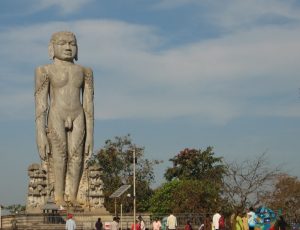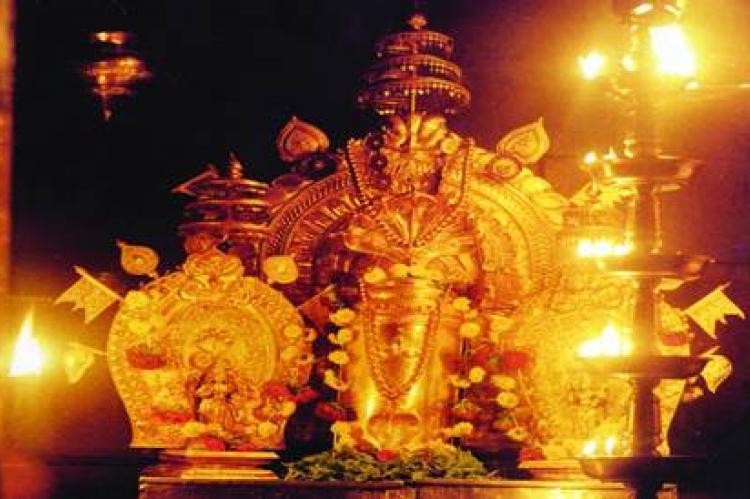Our erstwhile Prime Minister Shri Narendra Modi has visited one of the most popular temple in Dakshina Karnataka, “Dharmasthala”. Dharmasthala Temple has a tradition of more than 800 years. Let us have look at the Significance of this Shivaite temple and its stories.

The temple is considered unique since it belongs to the Shaivite sect of Hinduism. The priests are Shivalli Brahmins who belong to the Vaishnava sect of Hinduism and the administration is run by a Jain family called the Pergades. The deities of the temple are Shiva who is referred to as Manjunatha, Ammanavaru, Chandranath and the Dharma Daivas (guardian spirits of Dharma) namely Kalarahu, Kalarkayi, Kumaraswamy and Kanyakumari. Shri Kshetra Dharmasthala, the land of righteousness and piety, is one of south India’s most renowned religious landmarks with a history as old as 800 years.
“Dharmasthala”, the abode of dharma, is the quintessence of humanity and faith. As the name suggests, the word dharma in its truest sense means righteousness, it is the embodiment of the world’s most divine emotions in spite of one’s cast, creed or religion.
The word “Dharma” traditionally means religion, ritual, duty, righteousness, and alms. It also implies justice, truthfulness, freedom from fear, faith, solace, fulfillments and peace.
Dharmasthala is the perfect embodiment of the word “Dharma” for it displays every shade of meaning with which the word is imbued. The greatness of Dharmasthala, however is the fact that it has added an active element to “Dharma”, such that it touches the lives of people with a transformational directness that is unique.
To those that come for worship, Dharmasthala represents religious tolerance wherein caste, creed and faith of pilgrims are no bars. For here, the Jain Theerthankara is worshipped on the same consecrated grounds as the native Daivas and Lord Manjunatha (Lord Shiva). The priests are Vaishnavite Brahmins and the guardian of the temple is Heggade, a Jain by faith. Altogether forming a confluence of faiths that harmonize in belief of the Omnipotent.
Sri Manjunatheshwara Temple, Dharmasthala
Situated on the banks of river Nethravathi and surrounded by the lush green forests and hills of Malnad, Dharmasthala is known for it’s beautiful surroundings and Sri Manjunathaswamy Temple. In Dharmasthala, charity is a way of life, extended to all without discrimination. Sri Dharmasthala which is one of the sacred places in South India and is a famous pilgrim centre. It is situated in the village of Dharmasthala, in Beltangady Taluk of South Kanara district about 75 kms from Mangalore

History
800 years ago, Dharmasthala was known as Kuduma in Mallarmadi, a then village in South Kanara. Here lived the Jain Chieftain Birmanna Pergade and his wife Ammu Ballalthi in a house called Nelyadi Beedu. Simple, pious and affectionate people; the Pergade family was known for its generosity and hospitality to all.
According to legend, the guardian angels of Dharma assumed human forms and arrived at Pergade’s abode in search of a place where Dharma was being practiced and could be continued and propagated. As was their habit, the Pergade couple hosted these illustrious visitors with all their wherewithal and great respect. Pleased by their sincerity and generosity, that night the Dharma Daivas appeared in the dreams of Shri Birmanna Pergade. They explained the purpose of their visit to him and instructed him to vacate his house for the worship of the Daivas and dedicate his life to the propagation of Dharma.
Asking no questions, the Pergade built himself another house and began worshipping the Daivas at Nelyadi Beedu. This continues even today.
As they continued their worship and their practice of hospitality, the Dharma Daivas again appeared before Shri Birmanna Pergade to build separate shrines dedicated to the four Dharma Daivas – Kalarahu, Kalarkai, Kumaraswamy and Kanyakumari. Also, Pergade was instructed to choose two persons of noble birth to act as the Daivas’ oracles and four worthy persons to assist Shri Pergade in his duties as the Executive Head of the shrines. In return, the Daivas promised Shri Pergade family protection, abundance of charity and renown for the ‘Shri Kshetra’.
As ordained, Shri Pergade built the shrines and invited Brahmin priests to perform the rituals. These priests requested Pergade to also install a Shivlinga beside the native Daivas. The Daivas then sent their vassal Annappa Swamy to procure the Idol of Lord Manjunatheshwara from Kadri, near Mangalore. Subsequently Shree Manjunatha Swamy temple was built around this idol.
Around the 16 Century, Shri Devaraja Heggade invited Shri Vadiraja Swami of Udupi to visit the shrine. The Swamiji gladly came but refused to accept Bhiksha (food offering) because the idol of Lord Manjunatha had not been consecrated according to the vedic rites. Shri Heggade then requested the Swamiji to re-consecrate the shiva linga himself. Pleased by the observance of the vedic rites and Heggade’s charity to all, the Swamiji named the place Dharmasthala the abode of religion and charity. Thus, the roots of charity and religious tolerance established by the Pergades 800 years ago have been nurtured and strengthened by twenty one generations of the Heggade family, (Heggade being a derivative from Pergade). Today’s Dharmasthala blossoms with the fruit of this selfless dedication.
Shri Bahubali in Dharmasthala
Dharmasthala is famous for Sri Manjunatheshwara Temple and Bahubali monolithic statue of 39 feet height and weighing more than 210 tons. This statue, located on Ratnagiri Betta, was brought to this location from Karkala in 1982. Confluence of various religions is the evidence of the tolerance and spirit of oneness that is the quintessence of Dharmasthala.
Legend of Bahubali
Bharatha and Bahubali were the sons of the first Jain Theerthankara, King of Rishabha. After is reign he gave Bharatha, his elder son, Ayodhya to rule. To Bhaubali he gave Podanapura. Bharata then acquired the celestial spinning Chakra Ratna, that empowered him to conquer the world.

With his chakra, Bharata conquered many kingdoms and achieved total sovereignty over them then he set to conquer his brother Bahubali’s Podanapura. On requesting Bahubali to accept his supremacy, Bahubali refused, thus infuriating Bharatha.
To avoid a bloody war, the two brothers fought each other hand to hand. Bahubali vanquished his arrogant and acquainting brother and would have killed him, when realization dawned on him. This realization brought disillusionment with the world of lust and greed. Bahubali renounced the world and handed over his kingdom to Bharatha.
He assumed the role of Digambara to begin penance naked and standing until he gained enlightenment. This symbolizes total detachment from the material world owing only to service the mankind.
Festivals
Ganesha festival, Navaratri and Deepavali festivals are celebrated with grandeur at Dharmasthala. The annual festival or carnival called Pattanajae Jatre is held in April every year before the onset of monsoons. People flock from far and near during these times.
Laksha Deepothsava
Festival of lights and grand illumination celebrated for five days in the month of Kartika (November – December) during this festival, there is cultural activities, Sarva-Dharma & Sahithya Sammelana. There are special seminars are as follows:
Fine arts on the third day.
Religions of the world, on the fourth day.
Literature on the fifth day.
Special Poojas to Chandranatha Swamy.
==============
Must Read : Karthika Masam : Karthika Puranam for Salvation!
Must Read : Ayyappa Swamy – Deeksha, Pilgrimage & Devout Worshippers









